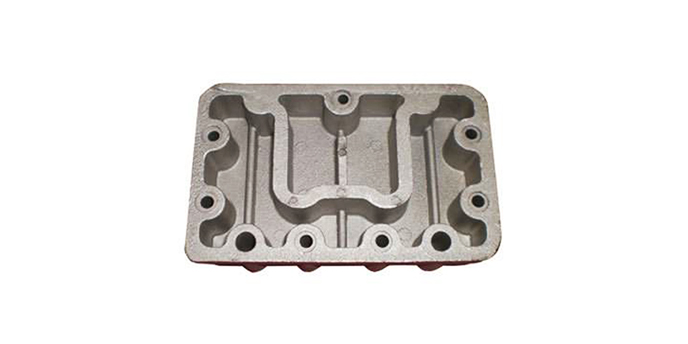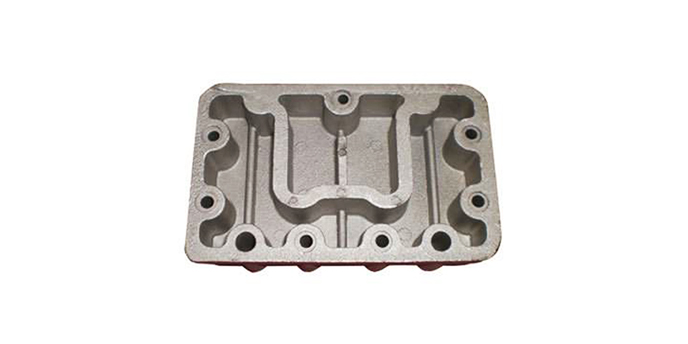- Contact Innally, Let you purchase forgings in China more favorable prices, products more assured!
- Hotline:+(86)15038323776 Email:innally@innally.com
What is locomotive cylinder head forging?
- Category: Locomotive forging, Steel forgings
- |
- Date: 17/08/2023
Locomotive cylinder head forgings are made by forging process, with stable mechanical properties and durability, and can withstand the high temperature and high pressure environment when the engine is working. It is made of high-quality alloy steel material, which has good strength, heat resistance and wear resistance, and can maintain stability under harsh working conditions.
- Can be customized according to the specific model
Product Details
Locomotive cylinder head forging is an important part of diesel locomotive engine. It is located above the cylinder block to seal the cylinder, support the cylinder sealing device, and conduct and dissipate heat. In the working process of internal combustion engine, the cylinder head is under the influence of high temperature, high pressure and cyclic load, so its material and characteristics have higher requirements.
Locomotive cylinder head forgings are made by forging process, with stable mechanical properties and durability, and can withstand the high temperature and high pressure environment when the engine is working. It is made of high-quality alloy steel material, which has good strength, heat resistance and wear resistance, and can maintain stability under harsh working conditions.

The design of locomotive cylinder head forging must meet a series of requirements. First of all, it needs to have good rigidity and pressure resistance, able to withstand the pressure of the internal gas and maintain the seal. Secondly, it needs to have excellent thermal conductivity, which can effectively conduct the heat generated in the combustion chamber to the outside, avoiding overheating and causing failure. In addition, the locomotive cylinder head forging also needs to have a certain wear resistance, and can work stably in the friction and vibration environment for a long time.
In order to ensure the quality and performance of locomotive cylinder head forgings, advanced process technology and equipment are needed in the manufacturing process. First of all, high-quality alloy steel materials should be selected from the material selection to ensure that the forgings have the required mechanical properties and high temperature characteristics. Secondly, in the forging process, it is necessary to control the temperature, pressure and deformation parameters to ensure that the forging reaches the size and shape of the design requirements. Then, the forgings are strengthened and tempered by heat treatment process to improve the hardness and wear resistance of the material. Finally, precision machining and surface treatment of the forgings are carried out to ensure their geometric dimensional accuracy and surface quality.
Locomotive cylinder head forgings play an important role in diesel locomotive engines. It is not only a key component to ensure the normal operation of the engine, but also affects the working efficiency and reliability of the engine. Excellent cylinder head forgings can effectively seal the cylinder volume, maintain a good combustion state, and improve the power and fuel economy of the engine. At the same time, it can effectively bear the pressure and thermal stress inside the engine, ensuring that the system will not leak or damage.
In summary, locomotive cylinder head forging is an important component to withstand high temperature, high pressure and cyclic load, it has high strength, heat resistance, pressure resistance and wear resistance. Through reasonable design, high-quality materials and advanced technology manufacturing, the quality and performance of locomotive cylinder head forgings can be guaranteed, providing key support and protection for the normal operation of diesel locomotives.
ayu
INNALLY mainly provides you with various types of cast and forged parts products. Welcome your inquiries! innally@innally.com
Search
Forging center
- Steel forgings
- Aluminium alloy forging
- Titanium alloy forging
- Stainless steel forging
- Copper forging
- Automotive forgings
- Locomotive forging
- Bicycle forgings
- Motorcycle forging
- Rigging and fasteners
- Bearing forging
- Electric power fittings
- Marine forging
- Mechanical forgings for metalworking
- Mining machinery forgings
- Marine engineering forgings
- Construction machinery forgings
Popular product

© 2025. All Rights Reserved.







